They say Trieste is the most Central European city in Italy. What is certain is that, besides being a wonderful city, it has been a meeting place of different cultures for centuries, a multicolored city where different languages have always been spoken, a port open to the world, a cultured and elegant city. Trieste overlooks its gulf, a natural harbor located in the northernmost part of the Adriatic Sea and lashed in winter by the bora, the wind that comes down from the northeast and wedges between the city’s buildings, with its famous violent and sudden gusts. Trieste is a bridge between Italy andEastern Europe: the border with Slovenia is a stone’s throw away, and the city itself has been Italian for a relatively short time. Roman Tergeste flourished mainly in the imperial age, only to pass into more than secondary importance during the Middle Ages. Its fortunes were tied at first to those of Aquileia, then, from 1382, to those of the Holy Roman Empire, of which Trieste was a part until 1806. Occupied by the French during the Napoleonic era, it returned to Austria with the Restoration, and Austrian it remained until 1918, becoming, however, during the Risorgimento, the major center of Italian irredentism along with Trent. It was not until after World War I that Trieste was able to be annexed by Italy, only to become the subject of dispute again following World War II, when it was disputed between Italy, which wished to keep it homeland soil, and Yugoslavia, which intended instead to annex the city of Trst, as Trieste is called in the Slavic language. The 1947 Treaty of Paris established the Free Territory of Trieste, an independent state that never came into being, however: the dispute was resolved only in 1954, when the London Memorandum assigned Trieste to Italy and Koper to Yugoslavia. Today Trieste is a refined and cosmopolitan city, and there are many wonders to be seen here. Let us try to list ten of them from which to start one’s journey of discovery in the capital of Friuli-Venezia Giulia.
For the people of Trieste it is simply “Piazza Unità,” for the whole world it is Piazza Unità d’Italia, the heart of Trieste, its most famous view, the center of the social and administrative life of the city, one of the most beautiful and elegant squares in Italy, with its rectangular plan that faces directly onto the Gulf of Trieste, and is home to all the palaces of local power. The side facing the city is closed by the nineteenth-century Town Hall, built in eclectic style by the Trieste architect Giuseppe Bruni: famous for its central tower, the clock tower, where two automata, nicknamed Mikez and Jakez (Michele and Giacomo) by the people of Trieste, strike the hours (the originals are in the San Giusto Castle Museum, replaced by copies in 1972). Other splendid 19th-century buildings then line the square: the Lloyd Adriatic Palace, now the seat of the Region; the Palace of the Austrian Lieutenancy, which is instead the seat of the Friuli-Venezia Giulia Region; the Stratti Palace, whose first floor houses the Caffè degli Specchi, known for its elegance and literary frequentations; the Modello Palace, home to a service distribution company; the Grand Hotel Duchi d’Aosta; the Pitteri Palace, dating from the late 18th century, and the oldest palace in the square. In the center of the square, on the other hand, one can admire the Fountain of the Four Continents, executed between 1751 and 1754 by Giovanni Battista Mazzoleni, and nearby the statue of Emperor Charles VI of Habsburg.

The San Giusto hill is the oldest core of Trieste, the heart of the medieval city. Several important testimonies can be found here: the remains of the Roman forum, the Cathedral of San Giusto, and the Castle. The latter, an ancient fifteenth-century fortress later rebuilt in the eighteenth century, now houses the San Giusto Castle Museum, which through a very rich display of artifacts, works of art, weapons and more tells the ancient history of the city. The cathedral, the city’s main house of worship, is also one of the most interesting Romanesque-Gothic churches in northern Italy. Built between 1302 and 1320 as a result of the union of two pre-existing churches, it is notable for its façade on which the rose window in karst stone stands out and to which the squat, squared-off bell tower is leaning. The sober and austere interior has retained its ancient appearance: particularly worth seeing are the Byzantine mosaics decorating the side apses, dating from the 12th century and thus belonging to the older buildings on which today’s cathedral was built. A curiosity: the Treasury of the Cathedral contains the halberd of St. Sergius, the symbol of the city (it is also found in its coat of arms): according to a legend, the halberd fell from the sky on Trieste on the day when Sergius, who was from Trieste, suffered martyrdom on Persian soil.
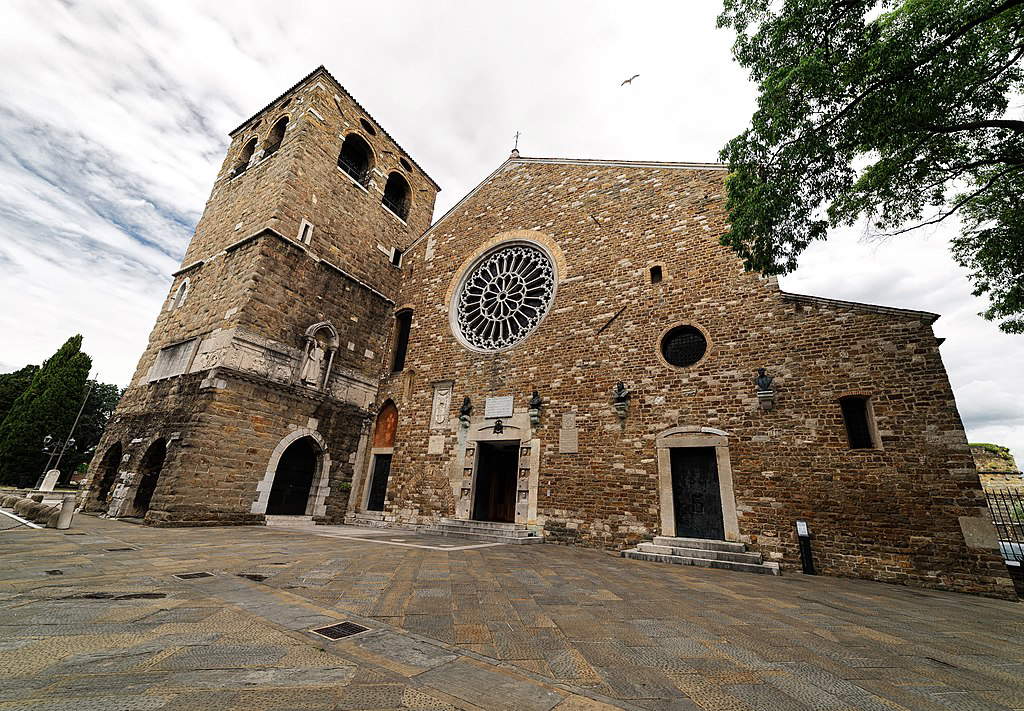
The Revoltella Museum is the city’s main art museum and originates from the rich collection of Baron Pasquale Revoltella (Venice, 1795 - Trieste, 1869), who left several of his possessions to the city, including his entire art collection, which was arranged as a museum in 1872 inside the 19th-century palace where the baron lived, designed by German architect Friedrich Hitzig and also left as a gift to the city. The collection preserves works of art that reflect the great collector’s taste, up-to-dateness and modernity, but the collection was later expanded by the city council, and today the works preserved at the Revoltella Museum give a good idea of the vicissitudes of Italian art between the late 19th and early 20th centuries, with works by artists such as Antonio Canova, Giuseppe De Nittis, Gaetano Previati, Felice Casorati, Carlo Carrà, Mario Sironi, up to the 1950s and 1960s with names such as Antonio Corpora, Emilio Vedova, Giuseppe Capogrossi, and Lucio Fontana. Those who prefer ancient history, however, will find much to see at the Museum of Antiquities Johann Joachim Winckelmann, Trieste’s archaeological museum, named in memory of the great theoretician of neoclassicism who was killed in Trieste, with Egyptian, Roman, prehistoric collections, and more.

The affairs of Trieste are unfailingly linked in literature to the figures of Italo Svevo, a native of the city, and James Joyce, who stayed in Trieste for a long time. Two museums, the Svevian Museum and the Joycian Museum, are dedicated to them. In the former, documents and objects that belonged to Italo Svevo, as well as original manuscripts, photographs, letters and a library with all editions of Svevian works in the original language and in the various translations. Also present is the world’s leading collection of critical literature on Italo Svevo. A curiosity: on December 19, on the occasion of the writer’s birth anniversary, the museum celebrates him with an event called “Happy Birthday Svevo.” The Joycian Museum, on the other hand, collects materials documenting the Irish writer’s stay in Trieste: there is no shortage of a section devoted to his relationship with Italo Svevo. Then there is also a third literary museum: it is the Petrarchesco Piccolomineo Museum, which houses an important collection of illuminated codices, ancient books and works of art bequeathed to the Trieste Library by Count Domenico Rossetti de Scander. The name is due to the fact that the first printed editions of Petrarch’s Canzoniere and Trionfi are preserved here, as well as an autograph letter from the great humanist Aeneas Silvius Piccolomini, aka Pope Pius II.
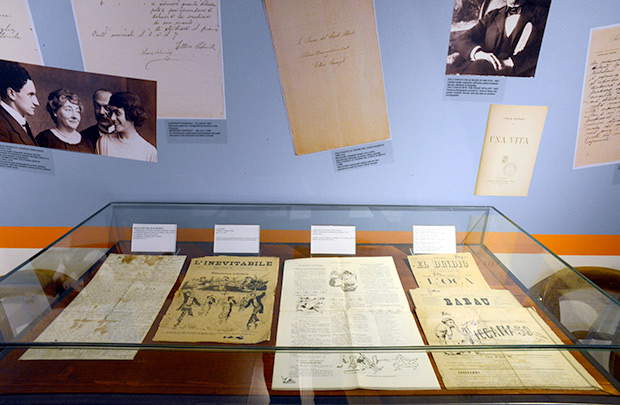
Opened in 1912, the Trieste Synagogue is one of the largest Jewish temples in the world, the most obvious and recognizable symbol of the greatness of the Jewish community that has lived in Trieste since ancient times. It is a large concrete temple built in the Oriental style, with a large rose window on the facade, and domes reminiscent of buildings in the Middle East. The Synagogue can be a first stop in the discovery of Judaism in Trieste, to be continued perhaps with a visit to the Jewish Community Museum “Carlo and Vera Wagner,” opened in 1993, where it is possible to learn about the history of Trieste’s Jewish community through objects from the synagogues present in the city before they were dismantled to make way for the present early 20th-century building, objects that tell the story of Jewish life and rituals, and much more. Also converted into a museum is the infamous Risiera di San Sabba, the former 19th-century rice-processing plant that was turned into a concentration camp during the Fascist era (it has been a national monument since 1965, open to visitors since 1975).
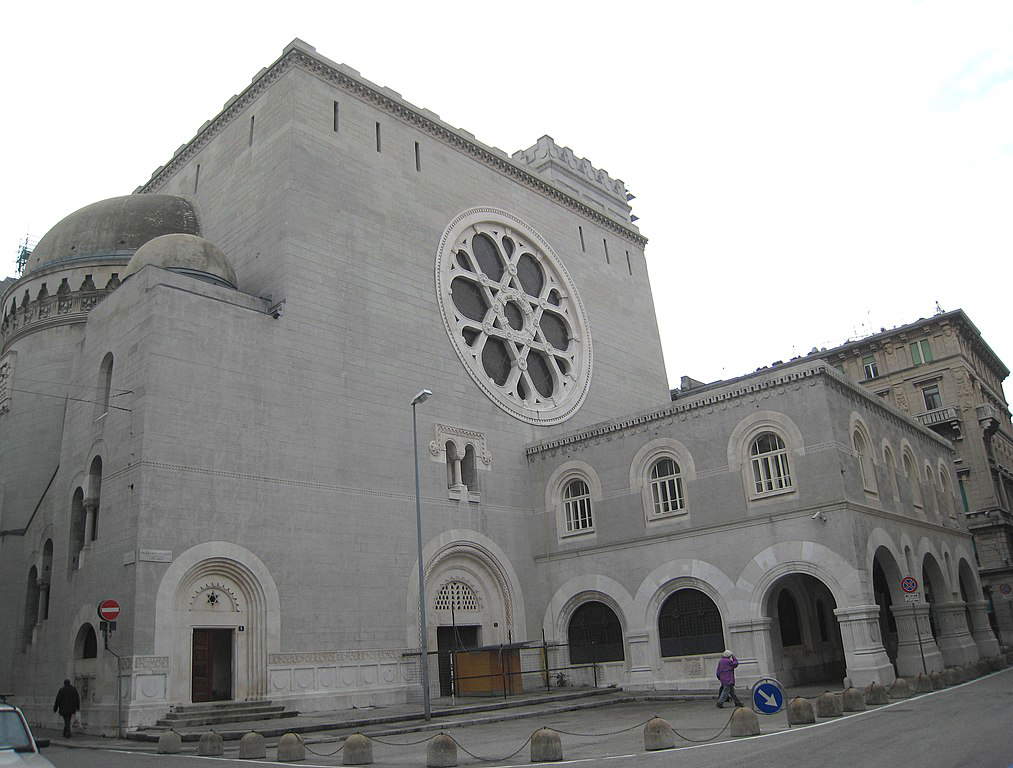
While Piazza Unità d’Italia has always been the administrative center of Trieste, Stock Exchange Square, which lies immediately behind the more famous square, has instead been its main economic center since the time when the city’s customs house stood here. The square is dominated by the Stock Exchange building, built in 1806 in the neoclassical style, with forms resembling those of an ancient temple, as the seat of the commodities exchange founded in the 18th century. Then, in 1844, the stock exchange was moved to the nearby Tergesteo Palace and operated until 1997, when it was closed, like all other stock exchanges in the country, which were merged into the single Italian Stock Exchange. Today, however, the Stock Exchange Palace has retained its economic vocation as the headquarters of the Chamber of Commerce.
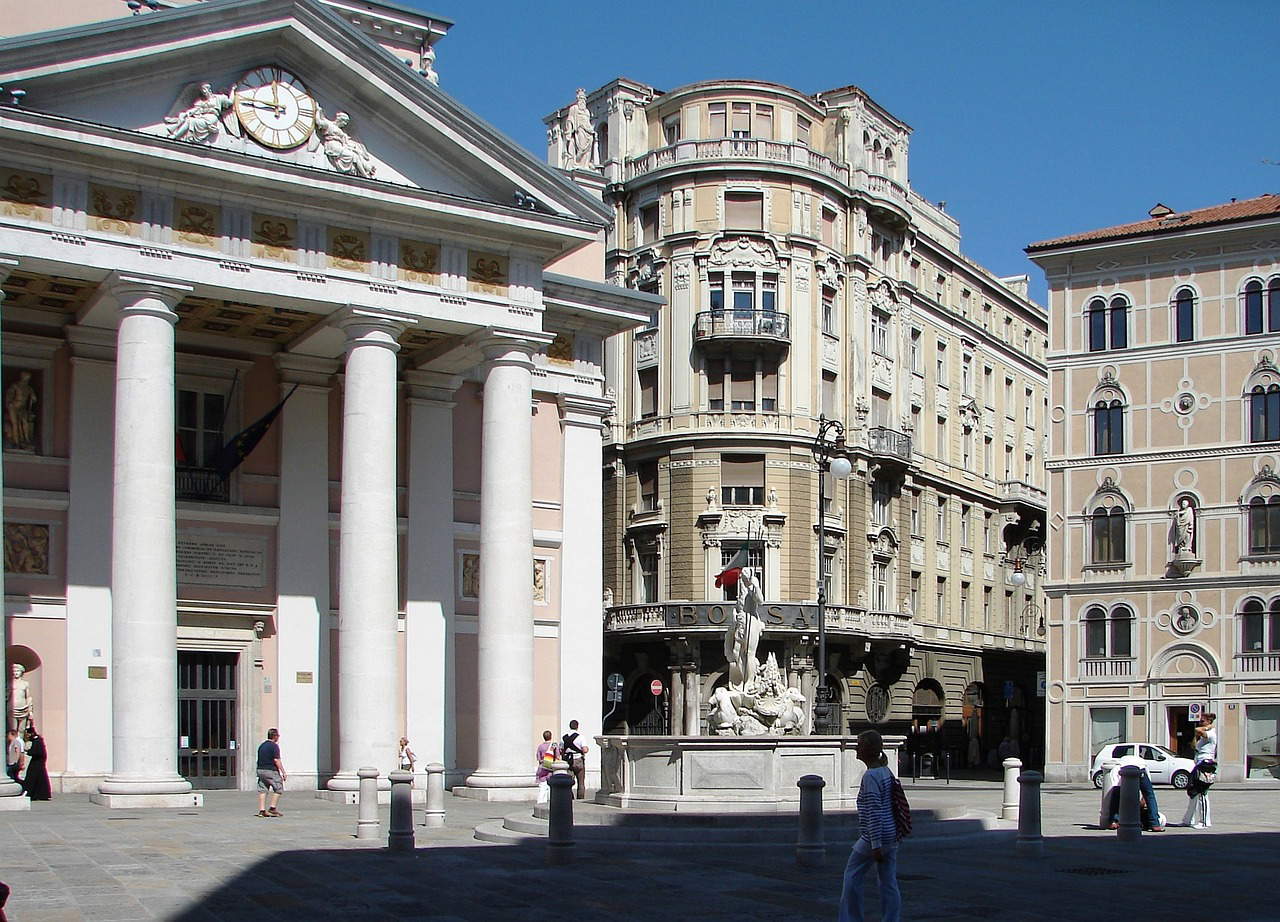
Gopcevich Palace stands at the center of the Borgo Teresiano, the 18th-century district begun under Emperor Charles VI to further develop the city around its port, is one of the most curious buildings in downtown Trieste: designed in 1850 by Giovanni Andrea Berlam for the Serbian shipowner Spiridon Gopčevi�? (Spiridione Gopcevich), it is distinguished by its eclectic facade (one of the earliest examples of this style in Trieste), with a red and yellow geometric design and statues and friezes. The building was purchased in 1998 by the City of Trieste and is now home to the Civic Theater Museum "Carlo Schmidl," dedicated to Trieste’s theater life from the 18th century onward: the public can observe stage costumes, musical instruments, playbills, posters, documents, photographs, manuscripts, and works of art, all collected by the Trieste music publisher Carlo Schmidl, who founded his museum in 1924 (until 1991 it was housed on the premises of the Giuseppe Verdi Municipal Theater, then, after a period of temporary accommodation in Palazzo Morpurgo, it found a home in Gopcevich Palace since 2006).

The Grand Canal is the canal that rises in the center of the Borgo Teresiano, the orderly 18th-century district that represents one of the earliest cases of modern urban planning. Opened between 1754 and 1756 by Matteo Pirona to provide a navigable route for boats unloading goods from the port and bringing them to the center of the city, it is one of the most scenic areas of Trieste, overlooked by many of the most beautiful nineteenth-century buildings. The canal is enclosed by the outline of the neoclassical church of Sant’Antonio Taumaturgo (also called “Sant’Antonio Nuovo” by the people of Trieste), and not far away is one of the city’s most interesting buildings, the Serbian Orthodox temple of the Holy Trinity and St. Spiridione, built between 1869 and 1885 to a design by one of the leading architects of the time, Carlo Maciachini, is notable for its Byzantine appearance and its high dome, elements that make the temple one of the most recognizable and visited buildings in the city.
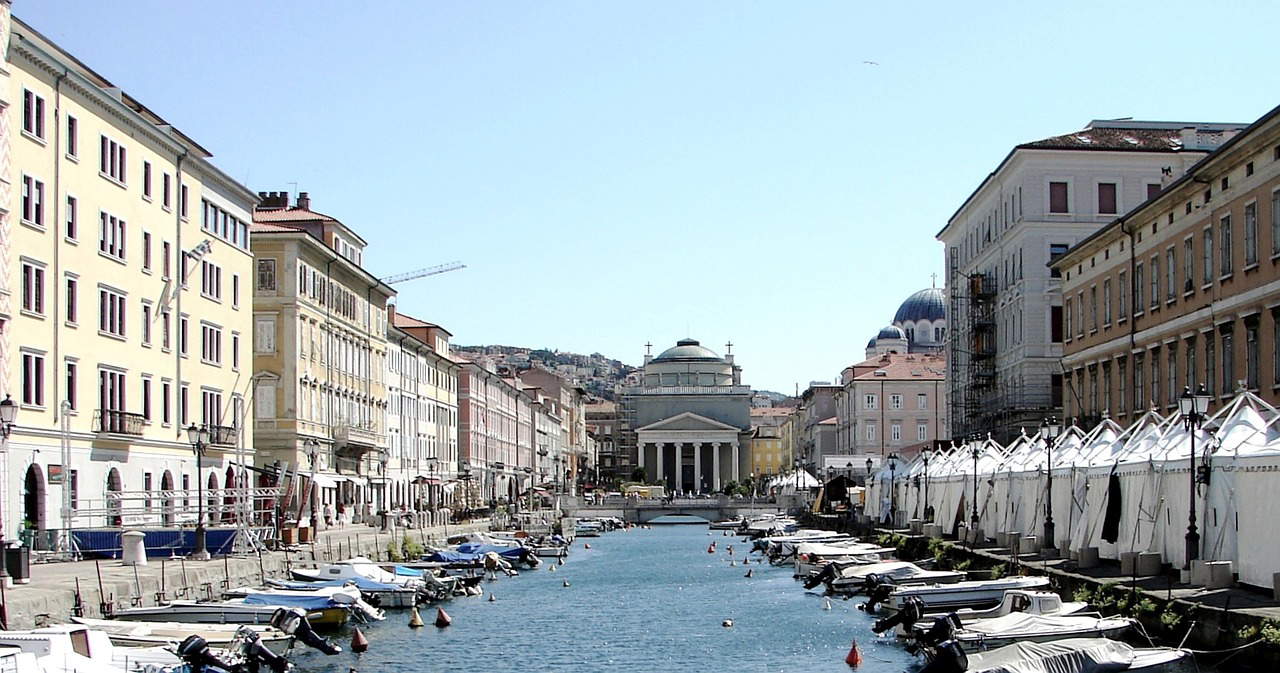
Riccardo’s Arch and the Roman Theater are the main historical evidences of Roman Tergeste. Riccardo’s Arch, so named for it was probably in ancient times the gateway to the city on the cardo maximus, i.e., the main road in the north-south direction of the Roman city (hence “Arco del Cardo,” hence “Riccardo’s Arch”), dates back to the first century B.C. although it was later remodeled in the Flavian period (thus in the first century A.D.). It is about a hundred meters from the Roman theater, now incorporated into the city center, and located along Via del Teatro Romano, at the foot of San Giusto hill (at the time of construction, however, it was outside the city walls). The construction again dates back to the 1st century B.C., although the theater took its present form in the 2nd century. It could hold 3,500 to 6,000 spectators and is one of the best-preserved Roman theaters in the area. Resurrected in the 1930s, it retains its ancient function today since it is a venue for events and concerts.
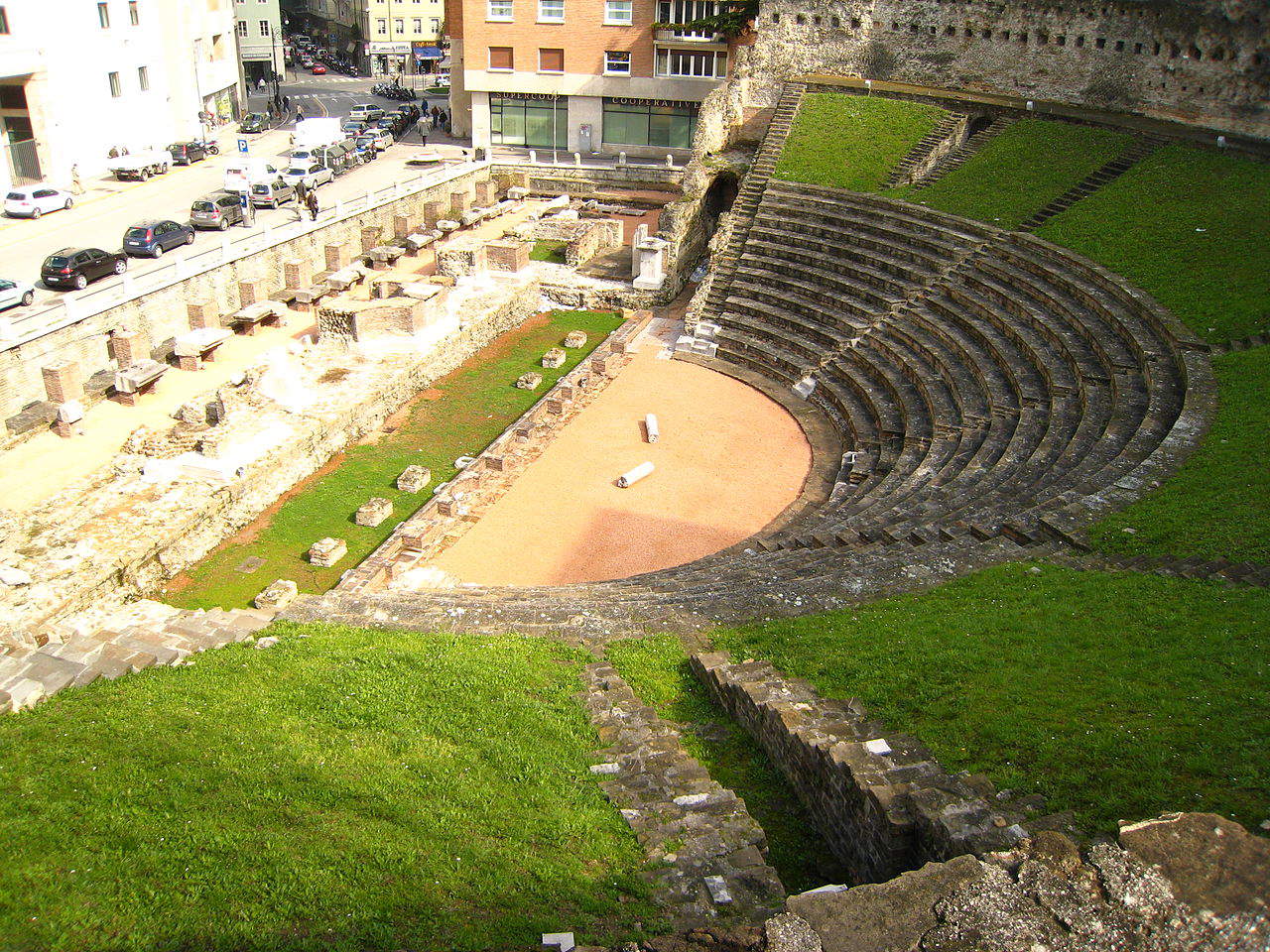
Although it is located about eight kilometers away from the city center, Miramare Castle(detailed background here) is perhaps Trieste’s most famous landmark, as well as its most visited monument. It was built starting in 1856 for the Archduke of Austria, Maximilian of Habsburg-Lorraine, who during a visit the previous year became fascinated by the promontory on which it was to be built, and entrusted the construction to engineer Carl Junker, who built Maximilian and his wife Charlotte’s dream home within a few years. An eclectic style mansion, which blended medieval, renaissance, and oriental cues, yet in a harmonious and balanced way, directly by the sea, with interiors designed by Franz and Julius Hofmann, who invented the most imaginative furnishings for the more than twenty rooms in the interior, which are still well preserved. Maximilian and Charlotte’s dream, however, was very short-lived: in 1863 Maximilian, who was governor of Lombardy-Veneto, was offered to become emperor of Mexico. Maximilian did not know, however, that he was setting out on a desperate quest, in the midst of a war against Mexican insurgents, who captured and shot him in 1867. Today the Castle remains a testament to that history, with its rooms still as they were then, its art collections, and its sumptuous furnishings.
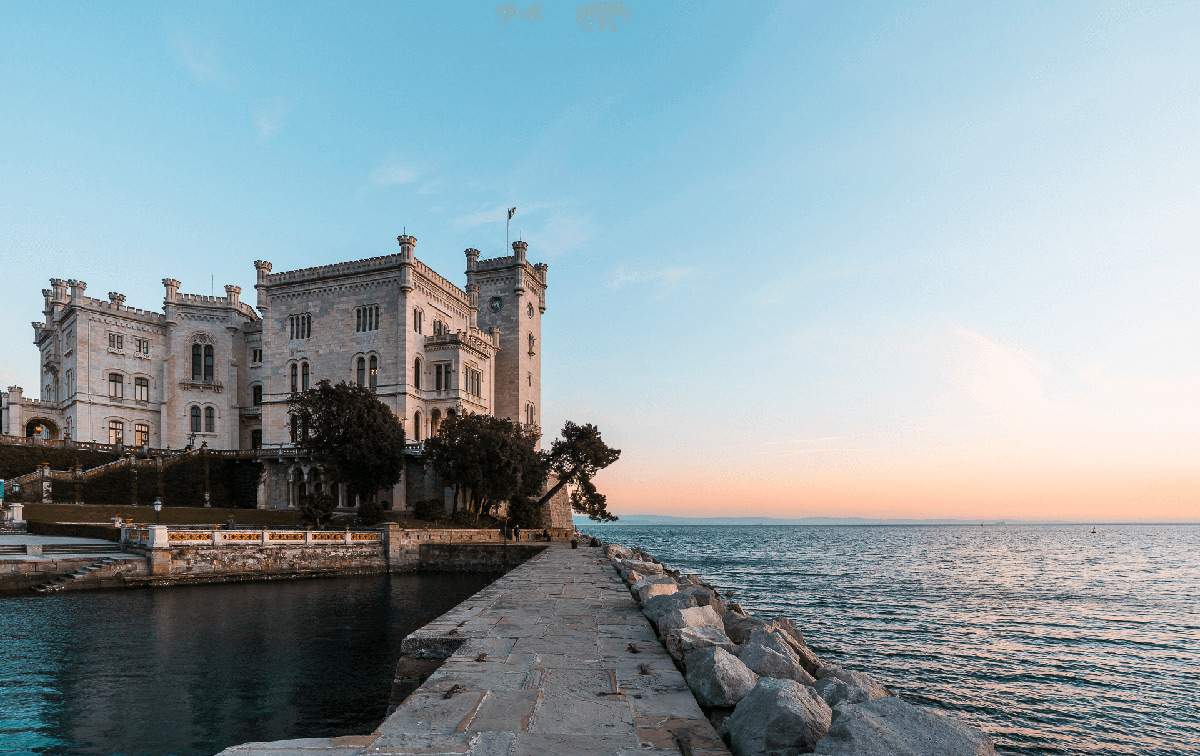
 |
| Trieste, what to see: the 10 places not to miss |
Warning: the translation into English of the original Italian article was created using automatic tools. We undertake to review all articles, but we do not guarantee the total absence of inaccuracies in the translation due to the program. You can find the original by clicking on the ITA button. If you find any mistake,please contact us.